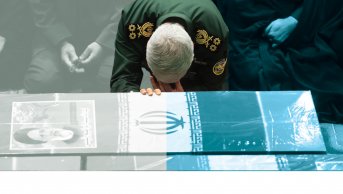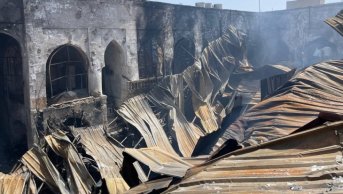Historical and Contemporary Revolutions: Is Analogy Possible?

Asst. Prof. Dr. Esra Pakin Albayrakoğlu, Namık Kemal University, ORSAM Middle East Advisor
Introduction Political scientists have drawn analogies between various historical revolutions and the recent ones in North Africa and the Middle East. The historical cases in consideration are the revolutions of 1848, 1979 and 1989, as well as those witnessed from the early to mid-2000s in Serbia, Georgia, Ukraine and Kyrgyzstan. Analogies are based on a number of criteria like the characteristics and goals of the revolutionaries; reasons that ignited and catalyzed these revolutions; the end result of revolutionary efforts and the scope of change they precipitated. The findings attest to several similarities as well as differences among the events under study. Nevertheless, we are still at an early stage to reach strict conclusions about analogies. The ongoing drama in the MENA region has not unfolded completely. Attempts to generalize might end up in missing the nuances, if any, of today’s revolutions. Points of similarity In the 1980s, the East European revolutionaries acted on the civil society concept while trying to stand up for their rights against the corrupt regimes and the repressive communist ideology. They used to their advantage those limited means of communication for a just and democratic space. The awakenings in North Africa and the Middle East share a similar organizational structure. Despite their heterogeneity, the Arab people of all stripes have found a common enemy in the personalized and authoritarian regimes. The notion of making the most effective use of mass media was especially visible in the examples of Tunisian and Egyptian revolutions.[1] Utilization of mass media for revolutionary purposes was also seen in the transformative wave of 1848 revolutions. In each country armored with the heroic fervor of the time, the respective revolutions displayed varying characteristics. Revolutions spread beyond the borders, and despite limited interaction they inspired one another. The same trend is also valid for the 2011 revolutions. In both waves the starting point was liberal nationalism and democracy, and the scope and intensity of revolutionary cause differed for each country involved. Composed mostly of middle class protesters, the revolutionaries in Hungary called for total independence from the Austrian Habsburgs, whereas in Prussia, they upheld the romanticized nationalist idea of a German unification. In France, the rioters sought to end the monarchic regime for good. Some of these revolutions paved the way to conflict among various ethnic groups, whereas some could be suppressed only through outside intervention. Even though most of these revolutions were brought to an end, the long-sought dreams of the rebels were realized to a great extent in the long run. The declaration of a unified Germany, creation of the Third Republic in France and the long-awaited independence of peoples under the Habsburgs after the First World War are some of the main examples. The contemporary revolutions bear the same multidimensional aspect. In each country, the army’s support for the revolts (Tunisia and Egypt), the presence and scope of ethnic or denominational clash (Sunni-Shia conflict in Bahrain), the role of Islam (Yemen) and the degree of pressure and violence exerted upon the rebels by the regime (Libya) show great variety. Perhaps many revolutions would end up in vain just like their 1848 counterpartS; but there is also the possibility that the protesters would set the stage for a systemic change in future.[2] Lastly, one can draw an analogy among various cases in 1848, 1989 (especially Romania), 2000 (Serbia), Tunisia and Egypt in terms of the army’s changing sides and/or showing empathy and solidarity with the revolutionaries. In October 2000, as can be recalled, the special Serbian police units named “red berets” refused to fire against the rebels, which meant a clear disobedience to the Serbian leader Slobodan Miloseviç’s orders.[3] Points of difference The 2011 revolutions belong to a post-ideological generation. For the young dissidents of today, even though the utmost goal is not to bring in secularism, the 1979 İranian Revolution cannot be a model to replicate. Their cause rests upon democracy, just governance, civic rights and fundamental liberties, despite the fact that they lack the necessary foresight and vision (like Kemalist or Arab nationalism and state building) as to how to reach that end. It is also dubious that the recent revolutionary wave would engulf the whole region and trigger a fundamental systemic transformation like its 1989 counterparts. The Persian Gulf countries, for example, are visibly capable and willing to suppress potential or actual revolutions through carrots ans sticks.[4] The 1989 revolutions not only changed the lives of Soviet bloc people completely, but they went beyond that to revise the international arena politically and economically. They also laid the background against which Europe and Asia emerged as new actors contesting for power in a new era.[5] Likewise, the reason why those revolutions ending communism bear the similar qualities is that they all stemmed from a major political decision: discontinuance of Soviet support for the Eastern European dictators. The rationale behind Mikhail Gorbachev’s maneuver was the hope to spare the ideology at least at home. However, the causes behind the Arab revolutions are multifaceted (economic, demographic, etc.), and each assumed a different character as they unfolded.[6] The 1989 revolutions also reversed the 1917 Bolshevik Revolution, triggering a number of follow-up revolutions in a couple of years in Serbia (2000), Georgia (2003), Ukraine (2004) and Kyrgystan (2005). Each was fueled after rigged elections in half-autocratic countries; each was influenced by the creative slogans by non-violent young protesters; in each, some higher-ups contributed to this evolutionary process (Mikhail Saakashvili, Viktor Yuschenko ve Kurmanbek Bakiyev) and finally, each despotic government found it impossible to suppress the rebels. Looking at the 2011 revolutions, even though the educated youth played a visible role, the centre of gravity rested with the hopeless masses suffering from unfavorable socio-economic conditions, especially unemployment. Furthermore, former elites of the Arab opposition had long been oppressed and many were surprised to witness the enthusiasm of the youth and pace of the events. On the other hand, the underlying causes of past and present protests are not the same. In Georgia and Ukraine, people decided to take the reins into their hands in order to keep up with the realities of the New World Order. It was their belief that, their geriocratic and outmoded leaders could not lead them into a modern way of living. In Serbia, people were missing the broad freedoms they had enjoyed during the Yugoslavian era. They were questioning why they regressed while Poland and Hungary were knocking on the doors of the European Union. However, the architects of the 2011 revolutions did not embrace a clear vision from the start as regards what form of governance they would create, how and with whom. There is ambiguity and confusion in the air even in those countries having mostly accomplished their tasks. Last but not least, the dimension of “the international” or “the West” in particular is clearly missing in the equation. The Western countries had encouraged the pro-Western Serbian, Georgian and Ukranian revolutionaries, sometimes even with financial aid. Perhaps part of the explanation why the West rather turned a blind eye to the plight of the revolutionaries today lies in the fact that these authoritarian regimes have long been backed by the West.[7] In the same vein, when communism fell with the demise of the Soviet bloc, the West had breathed a sigh of relief. That was because the Eastern European revolutions were done in the spirit of and in order to integrate with the West. In short, the post-Soviet democratic space in Eastern Europe was a thing to celebrate. Relatively speaking, democratic elections in the Arab geography always carry the possibility of bringing in hawks and/or Islamists. As an example, the 1991 elections in Algeria had brought to power the Islamic Salvation Front, after which a bloody civil war ensued. In Palestine, Hamas won the 2006 elections and in the post-election conflict Al-Fatah forces began to control the West Bank while Hamas dominated the Gaza region. These destabilizing developments were followed by Israel’s military intervention in and economic blockade of Gaza. Compared with the former Soviet satellites in Europe, neither the United States nor Europe has invested much in the name of planting the seeds of genuine democracy in the Middle East. It would be a great mistake to treat every group bearing an Islamic hue as a puppet of Iran or Al Qaeda. Bearing in mind that the Muslim Brothers played no dominant role in the process and in the aftermath of the revolution in Egypt, there is still a glimmering light of hope for true democracy to flourish in the Middle East.[8] Conclusion The revolutionaries in the MENA region stress that theirs were inspired by the 1989 revolutions. However, the West, especially the United States which had played the biggest role in the integration of the former Soviet states, should provide due support so that the 2011 revolutions would end up in total success just like their 1989 counterparts. It is of utmost importance not to approach those elected new leaders as carrying a potential for radicalism. This advice is also valid for Israel. Even though the US Secretary of State Hillary Clinton and the Israeli Prime Minister Benjamin Netenyahu believed that “revolutions have overthrown dictators in the name of democracy, only to see the process hijacked by new autocrats”, a favorable atmosphere should be created in order to forestall any tendency to destroy the gains of 2011 revolutions.[9] Perhaps it would be wise to pay attention to past experiences. In order to transform revolt to revolution, dedication, consistency and forecasting are crucial. Deposing a leader is not synonymous with changing the system. After the Orange Revolution in Ukraine, Viktor Yuschenko could not realize any substantial change apart from free elections, and he finally had to leave his post to his rival Viktor Yanukovich who further crippled fundamental rights and liberties. Similarly, after the Rose Revolution in Georgia, Mikhail Saakashvili set up a centralized government, minimized the role of the Parliament and imposed censorship on media.[10] Hence, it is very hard to arrive at generalizations in the light of ongoing military confrontation in Libya, protests in Bahrain and concessions in Jordan and Saudi Arabia. One thing for sure is that, today’s transformational events cannot usher in a new systemic change. It is also too soon to judge whether it would create a more stable and peaceful regional order.
[1] Ramin Jahanbegloo. “The heart and soul of Arab change is strong civil society,” The Daily Star (Lebanon), March 23, 2011. Also see Tony Judt. Postwar: A History of Europe since 1945 (Penguin, 2006). [2] Anne Applebaum. “In the Arab world, it's 1848 - not 1989,” The Washington Post, February 21, 2011. [3] Vicken Cheterian. “The Arab revolt and the colour revolutions”, OpenDemocracy, March 10, 2011. http://www.opendemocracy.net/vicken-ch
eterian/arab-revolt-and-colour-revolutions (Accessed on April 14, 2011). [4] Jahanbegloo. “The heart and soul of Arab change is strong civil society.” [5]George Lawson. “The global 1989,” OpenDemocracy, November 19, 2010. http://www.opendemocracy.net/george-lawson/global-1989 (Accessed on April 14, 2011). [6] Applebaum. “In the Arab world, it's 1848 - not 1989.” Also see Stephen Kotkin. Armageddon Averted: Soviet Collapse, 1970-2000, revised edition (Oxford University Press, 2008). [7] Cheterian. “The Arab revolt and the colour revolutions.” [8] “Egypt: 1989 and all that,” The Economist, February 11, 2011. [9] Roger Cohen. “Tehran 1979 or Berlin 1989?” The New York Times, February 7, 2011. [10] Cheterian. “The Arab revolt and the colour revolutions.”



